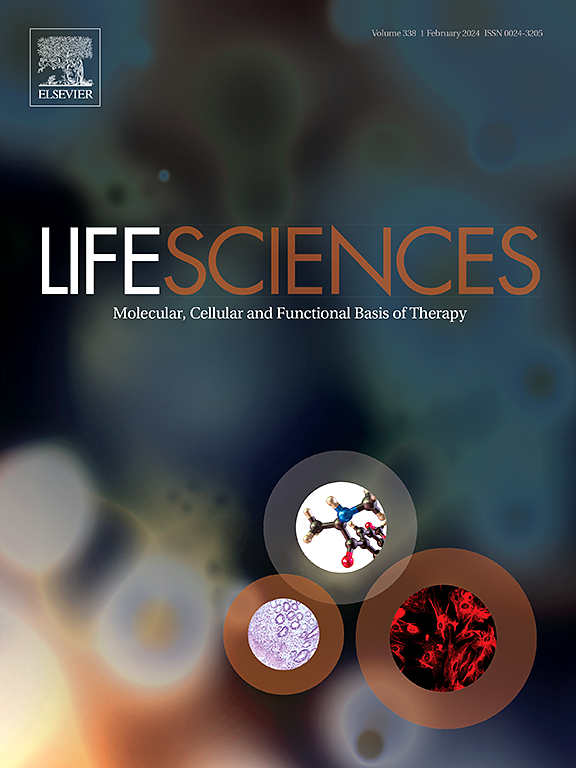Unravelling the interplay between ER stress, UPR and the cGAS-STING pathway: Implications for osteoarthritis pathogenesis and treatment strategy
IF 5.2
2区 医学
Q1 MEDICINE, RESEARCH & EXPERIMENTAL
引用次数: 0
Abstract
Osteoarthritis (OA) is a debilitating chronic degenerative disease affecting the whole joint organ leading to pain and disability. Cellular stress and injuries trigger inflammation and the onset of pathophysiological changes ensue after irreparable damage and inability to resolve inflammation, impeding the completion of the healing process. Extracellular matrix (ECM) degradation leads to dysregulated joint tissue metabolism. The reparative effort induces the proliferation of hypertrophic chondrocytes and matrix protein synthesis. Aberrant protein synthesis leads to endoplasmic reticulum (ER) stress and chondrocyte apoptosis with consequent cartilage matrix loss. These events in a vicious cycle perpetuate inflammation, hindering the restoration of normal tissue homeostasis. Recent evidence suggests that inflammatory responses and chondrocyte apoptosis could be caused by the activation of the cyclic GMP-AMP synthase (cGAS)-stimulator of interferon genes (STING) signalling axis in response to DNA damage. It has been reported that there is a crosstalk between ER stress and cGAS-STING signalling in cellular senescence and other diseases. Based on recent evidence, this review discusses the role of ER stress, Unfolded Protein Response (UPR) and cGAS-STING pathway in mediating inflammatory responses in OA.
揭示 ER 应激、UPR 和 cGAS-STING 通路之间的相互作用:对骨关节炎发病机制和治疗策略的影响。
骨关节炎(OA)是一种使人衰弱的慢性退行性疾病,影响整个关节器官,导致疼痛和残疾。细胞应激和损伤引发炎症,在不可修复的损伤和无法消除炎症之后,病理生理学变化随之发生,阻碍了愈合过程的完成。细胞外基质(ECM)降解导致关节组织新陈代谢失调。修复努力会诱导肥大软骨细胞增殖和基质蛋白合成。异常的蛋白质合成导致内质网(ER)应激和软骨细胞凋亡,从而造成软骨基质流失。这些事件形成恶性循环,使炎症长期存在,阻碍了正常组织平衡的恢复。最近的证据表明,炎症反应和软骨细胞凋亡可能是由于 DNA 损伤激活了环 GMP-AMP 合成酶(cGAS)-干扰素基因刺激器(STING)信号轴。有报道称,在细胞衰老和其他疾病中,ER 压力和 cGAS-STING 信号之间存在串扰。基于最新证据,本综述讨论了ER应激、折叠蛋白反应(UPR)和cGAS-STING通路在介导OA炎症反应中的作用。
本文章由计算机程序翻译,如有差异,请以英文原文为准。
求助全文
约1分钟内获得全文
求助全文
来源期刊

Life sciences
医学-药学
CiteScore
12.20
自引率
1.60%
发文量
841
审稿时长
6 months
期刊介绍:
Life Sciences is an international journal publishing articles that emphasize the molecular, cellular, and functional basis of therapy. The journal emphasizes the understanding of mechanism that is relevant to all aspects of human disease and translation to patients. All articles are rigorously reviewed.
The Journal favors publication of full-length papers where modern scientific technologies are used to explain molecular, cellular and physiological mechanisms. Articles that merely report observations are rarely accepted. Recommendations from the Declaration of Helsinki or NIH guidelines for care and use of laboratory animals must be adhered to. Articles should be written at a level accessible to readers who are non-specialists in the topic of the article themselves, but who are interested in the research. The Journal welcomes reviews on topics of wide interest to investigators in the life sciences. We particularly encourage submission of brief, focused reviews containing high-quality artwork and require the use of mechanistic summary diagrams.
 求助内容:
求助内容: 应助结果提醒方式:
应助结果提醒方式:


